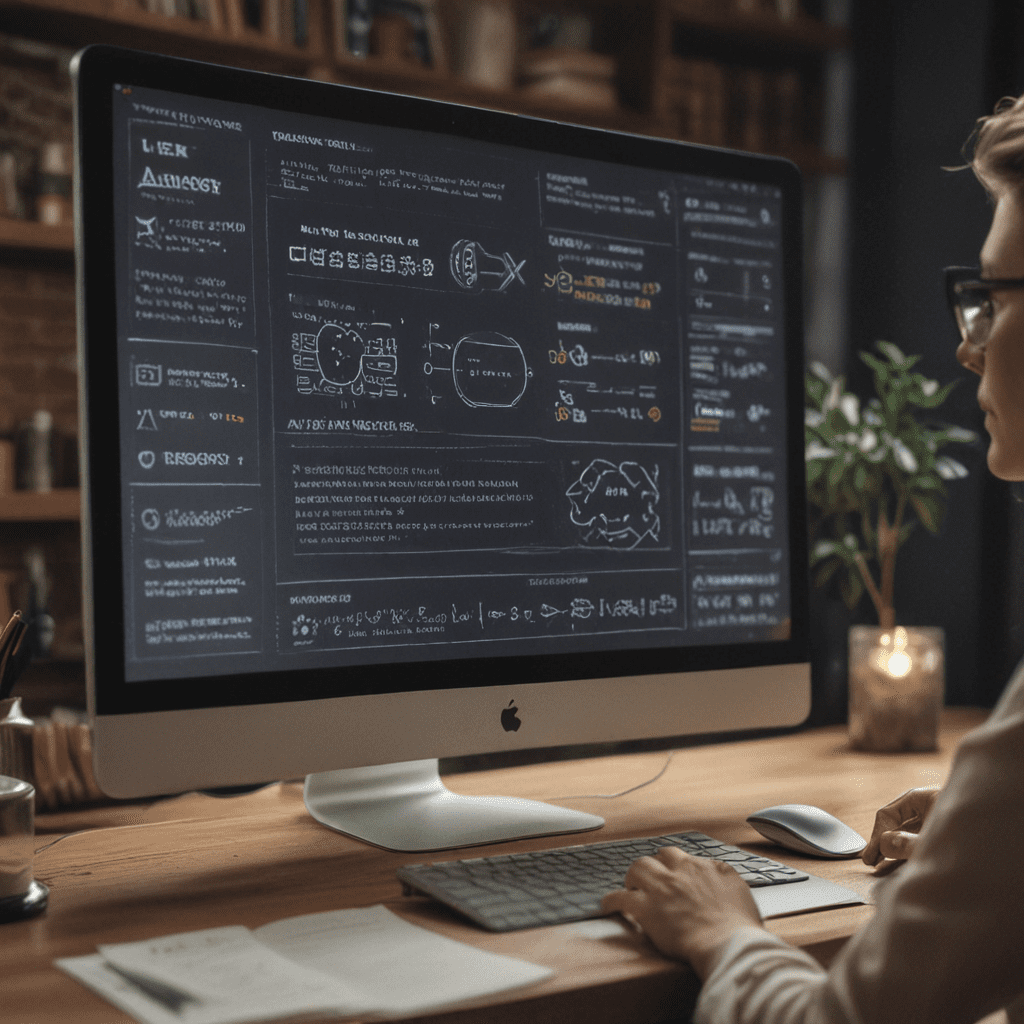
I. Introduction
In today's digital landscape, the user experience (UX) has become paramount in determining the success of any online product or service. User-centered design thinking has emerged as a transformative approach to UX, prioritizing the user's needs and perspectives throughout the design process. By understanding the user's motivations, expectations, and pain points, designers can create intuitive, engaging, and ultimately satisfying experiences.
II. Defining User-Centered Design Thinking
User-centered design thinking is a human-centered approach to design that emphasizes the user's needs, preferences, and behaviors. Unlike traditional design approaches that prioritize aesthetic appeal or technical specifications, user-centered design focuses on understanding the user's context, motivations, and aspirations. This approach ensures that the final product aligns with the user's actual needs, resulting in a more satisfying and intuitive experience.
III. Key Principles of User-Centered UX
User-centered UX is guided by several fundamental principles:
- Emphasize user goals: Design solutions should prioritize meeting the user's specific goals and objectives.
- Focus on accessibility: Ensure that the experience is accessible to users with diverse abilities, including those with disabilities.
- Iterate based on feedback: Regularly gather user feedback and incorporate it into iterative design improvements.
- Foster empathy: Develop a deep understanding of the user's perspective, needs, and motivations.
- Test continuously: Validate design decisions through rigorous user testing to ensure usability and effectiveness.
IV. Importance of User Understanding
Understanding the user is the cornerstone of user-centered design thinking. This involves comprehending the user's:
- Context: Circumstances and environment in which they use the product or service.
- Goals: Primary objectives and motivations for using the product or service.
- Pain points: Challenges or frustrations they encounter during use.
- Mental models: Cognitive frameworks and expectations that shape their interactions.
- Emotional needs: Emotional responses and desires evoked by the product or service.
By gaining a comprehensive understanding of the user, designers can create experiences that resonate with their needs and address their specific challenges.
V. User Research and Analysis
Thorough user research is essential for gathering the insights necessary for user-centered design. This includes:
- Interviews: Conducting one-on-one or group interviews to gather qualitative data on user experiences.
- Surveys: Distributing online or offline surveys to collect quantitative data on user demographics and preferences.
- Observational research: Studying users in their natural environments to observe their interactions and behaviors.
- Usability testing: Assessing the effectiveness and usability of design prototypes with real users.
- Data analysis: Analyzing user research data to identify patterns, trends, and insights that inform design decisions.
VI. Design and Prototyping Based on User Insights
Armed with a deep understanding of the user, designers translate user insights into actionable design solutions. This entails:
- Creating user personas: Developing hypothetical user profiles that represent typical user segments to guide decision-making.
- Sketching and wireframing: Generating rough design ideas and low-fidelity prototypes to visualize potential solutions.
- Developing high-fidelity prototypes: Creating interactive, clickable prototypes that simulate the final experience to gather detailed user feedback.
VII. Iterative Development and User Feedback
User-centered design is an iterative process that involves ongoing feedback and refinements. Designers:
- Collect continuous feedback: Gather feedback during user testing, interviews, and surveys to assess usability, engagement, and user satisfaction.
- Make data-driven decisions: Analyze user feedback and data to identify areas for improvement and prioritize design adjustments.
- Implement iterative changes: Regularly refine designs based on insights from user interactions.
VIII. Benefits of User-Centered Design Thinking
User-centered design thinking yields significant benefits for both users and businesses:
- Enhanced user experience: Prioritizing user needs leads to experiences that are intuitive, engaging, and meet user expectations.
- Increased engagement and conversion: Satisfying user experiences drive engagement, loyalty, and ultimately conversion to valuable actions, such as purchases or subscriptions.
- Reduced development costs: Iterative feedback loops help identify potential usability issues early, reducing rework and minimizing the need for costly redesigns later in the development process.
- Improved brand loyalty: Positive user experiences build brand loyalty and credibility, driving repeat usage and increased customer lifetime value.
IX. Real-World Examples of Successful User-Centered UX
Numerous real-world examples showcase the power of user-centered design thinking, including:
- Amazon's 1-Click ordering: This feature made it significantly faster and easier for customers to complete purchases, increasing conversion rates and customer satisfaction.
- Google's Material Design: This UX system emphasizes minimalism, intuitive interfaces, and accessibility across platforms, enhancing usability for a global user base.
- Spotify's personalized playlists: By leveraging data on user listening preferences, Spotify creates tailored experiences that increase engagement and satisfaction.
X. Conclusion
User-centered design thinking is a cornerstone of successful user experiences, leading to higher levels of satisfaction, engagement, and profitability. By deeply understanding the user's needs, perspectives, and motivations, designers create experiences that are intuitive, satisfying, and drive long-term value for users and businesses alike.
FAQs
What is the key to creating a truly user-centered experience?
The key lies in understanding the user's context, goals, pain points, mental models, and emotional needs through thorough user research and ongoing user feedback.
Why is iterative development essential in user-centered design?
Iterative development enables continuous refinement based on user interactions. This helps identify areas for improvement early in the design process, avoiding costly rework and enhancing usability and satisfaction.
How can businesses measure the impact of user-centered design on their products or services?
Metrics such as increased user engagement, higher conversion rates, reduced development costs, and improved brand loyalty serve as indicators of the positive impact user-centered design has on business success.

